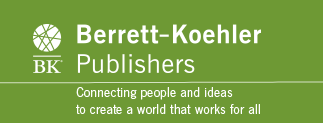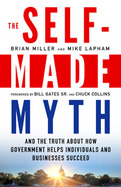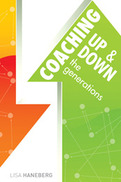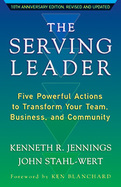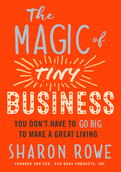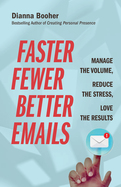2012
Exposes the damage caused by the myth of the "self-made man" and reveals how wealth is actually created.
- Exposes the damage to our political discourse and policy choices caused by the myth of the "self-made man"
- Offers testimony from a variety of business leaders about the full range of contributions to their success
- Spells out actions we must take to lay the foundation for a renewed prosperity in America
The Self-Made Myth challenges the by-your-own-bootstraps narrative enshrined in American tradition and beloved by antigovernment activists to offer a more holistic view of the success of business leaders and entrepreneurs. While acknowledging the importance of hard work, creativity, and leadership, it highlights several crucial, often unrecognized factors, with a particular emphasis on the ways government and society help individuals: public education, research and development grants, social services, roads and highways, laws and regulations that establish a stable business environment, and many more.
Miller and Lapham explore the historic roots of the self-made myth and reveal the societal damage it continues to cause. They present profiles of business leaders who, in their own words, identify the kinds of support and assistance that were crucial to their success, including Warren Buffett, Ben Cohen of Ben and Jerry's, New Belgium Brewery's Kim Jordan, and philanthropist, filmmaker, and heiress Abigail Disney. They also disprove the arguments of individuals such as Donald Trump and Ross Perot who have helped perpetuate their own self-made success myths.
How we view the creation of wealth and individual success shapes our choices on taxes, regulations, public investments in schools and vital infrastructure, the legitimacy of extravagant CEO pay, and more. The Self-Made Myth acknowledges and celebrates the truth of society's contribution. It takes a village to raise a business-it's time to recognize that fact.
"It is critical to change the conversation about how wealth is created, who creates it, and the role of government, and this book does that effectively and importantly. And it couldn't be more timely. I urge you to read this book and get engaged in the debate about progressive taxes."
-Bill Gates Sr.
-
Offers a complete, concise overview of how each generation -- The Traditionalists, the Boomers, Gen X and Gen Y -- view life, technology, work, communication and behavior
-
Shows that coaching can be more effective if it is a dynamic, interactive process, not a sterile set of practices imposed by a coach on a performer
-
Creates enthusiastic cross-generational communication and relationship-building
"Coaching," Lisa Haneberg says, "is agile, service-oriented persistence with a tolerance for the unexplainable and a willingness to go down a path that is not yours, does not interest you, and requires that you buy new shoes to traverse unharmed." This tongue-in-cheek description suggests the fun and breezy tone of this book. This is most decidedly not just another book about generational differences, nor is it yet another "how to coach" book. Coaching Up and Down the Generations looks at the key processes of transferring knowledge, developing teams, and collaborating, and examines how different age groups can better learn from one another and even experience major breakthroughs that will improve their progress -- despite disparate backgrounds.
You'll find a thorough examination of key issues in inter-generational coaching situations, including what constitutes great coaching, at any age; a complete overview of each generation and how they view life, technology, work, communication, and behavior; how to handle clashing communication styles and preferences; the importance of "coachability" in yourself and others regardless of different habits, opininos, and work styles; how to cultivate a coaching environment where the different generations can have provocative conversations and truly help one another.
With this book as your guide, you can show the generations how to find common points of interest, needs, and goals. You'll find ingenious tips for creating formal and informal coaching situations, developing opportunities to build relationships, and helping people of all ages to become catalytic coaches and engaged performers.
-
Offers a complete, concise overview of how each generation -- The Traditionalists, the Boomers, Gen X and Gen Y -- view life, technology, work, communication and behavior
-
Shows that coaching can be more effective if it is a dynamic, interactive process, not a sterile set of practices imposed by a coach on a performer
-
Creates enthusiastic cross-generational communication and relationship-building
"Coaching," Lisa Haneberg says, "is agile, service-oriented persistence with a tolerance for the unexplainable and a willingness to go down a path that is not yours, does not interest you, and requires that you buy new shoes to traverse unharmed." This tongue-in-cheek description suggests the fun and breezy tone of this book. This is most decidedly not just another book about generational differences, nor is it yet another "how to coach" book. Coaching Up and Down the Generations looks at the key processes of transferring knowledge, developing teams, and collaborating, and examines how different age groups can better learn from one another and even experience major breakthroughs that will improve their progress -- despite disparate backgrounds.
You'll find a thorough examination of key issues in inter-generational coaching situations, including what constitutes great coaching, at any age; a complete overview of each generation and how they view life, technology, work, communication, and behavior; how to handle clashing communication styles and preferences; the importance of "coachability" in yourself and others regardless of different habits, opininos, and work styles; how to cultivate a coaching environment where the different generations can have provocative conversations and truly help one another.
With this book as your guide, you can show the generations how to find common points of interest, needs, and goals. You'll find ingenious tips for creating formal and informal coaching situations, developing opportunities to build relationships, and helping people of all ages to become catalytic coaches and engaged performers.
2016
Five Powerful Actions to Transform Your Team, Business, and Community, 10th Anniversary Edition, Revised and Expanded
It's people who make organizations great, so how can leaders best help their people achieve that greatness? As Ken Jennings and John Stahl-Wert show in this new edition of their bestseller, you can't just demand greatness—you have to inspire it. The most effective leaders don't just stand in front of their people, they stand behind them too. As one of the characters in the book notes, “You qualify to be first by putting other people first.” This concept sounds paradoxical, but it leads to extraordinary outcomes—and The Serving Leader shows precisely how and why.
While Jennings and Stahl-Wert use a compelling fictional story to outline the basics of Serving Leadership, all the characters in it are based on real people, the organizations depicted are based on real organizations—and the results they achieved are what really happened. This edition features a new foreword by Ken Blanchard, a new introduction, and a new chapter checking back in with Mike, the main character, to see what he has learned in the twelve years since he embraced Serving Leadership
On one level this is the most practical guide available to implementing Serving Leadership; on a deeper level, it is a book about the personal journey of growth that real leadership requires. Great organizations are great because they're filled with people who freely choose to do their very best. It's a maddeningly simple concept yet stunningly hard to execute. Jennings and Stahl-Wert show leaders how to earn that kind of commitment.
—Seth Godin, author of Linchpin
Too many of us feel trapped by work that keeps us from living our purpose. We fantasize about starting our own business, yet we're warned against falling into debt, working eighty hours a week, and coping with the pressure to grow. Eco-Bags Products founder Sharon Rowe says there's another way: go tiny.
Like a tiny house, a tiny business is built on maintaining a laser focus on what is essential by living an intentional life. As an entrepreneur and mother, Rowe is most concerned with putting family first, maintaining financial security, and doing something that makes an impact in the world. Using the success story of Eco-Bags Products, Rowe distills the step-by-step process of building a profitable, right-scaled, sustainable venture that doesn't compromise your values. She shows you how to test your concept, manage your money and priorities, and more, while staying true to the "tiny" ethos.
Regaining Power over Money to Serve the Common Good
Just as Thomas Piketty offered a sweeping critique and progressive reassessment of capitalism, former World Bank Group chief financial officer Bertrand Badré looks at the destructive role finance played in the global economic crisis of 2007–2008 and offers a bold prescription for making it a force for good.
Badré says that finance is inherently neither good nor bad. It's just a tool—the most powerful tool on earth. Used correctly, it can be at the heart of the way we address many of the world's biggest problems, ranging from climate change to the eradication of poverty to building much-needed infrastructure. He describes innovations in financial tools and approaches that are already happening around the world and looks at the role regulation can play in channeling the power of finance in a positive direction. He details options for strengthening international cooperation for financial stability and prosperity and overcoming the blinkered nationalism currently on the rise. And he tells what is working and what needs to change in financing the sustainable development of the world.
This book is rich with practical examples, some developed by Badré himself. For instance, he describes how at the World Bank he devised an innovative way to use insurance, a financial tool rarely considered in international development, to buttress fragile emerging economies against natural disasters and pandemics. Initiatives like these show that, as Badré writes, “when controlled and used intelligently, with benevolence and inventiveness, finance can accomplish great things.”
Today, most business writing is email writing. We handle even our most important customer transactions, internal operations, and supplier partnerships solely by email.
Yet many of us still struggle to write emails that get results. And we often are so overwhelmed by the sheer volume of emails that we feel as though we're in email jail!
How we handle email has a large impact on the trajectory of our career. Emails can build or destroy credibility, clarify or confuse situations for our coworkers and customers, and reduce or increase security risks and legal liabilities. This book will help you master your emails and stand out as a clear, credible communicator. After all, clear, credible communicators become leaders in every industry.
With more than three decades of experience analyzing emails across various industries for corporate clients, Booher offers guidance on how to identify and stop email clutter so you can increase productivity while improving communication flow. In this book, you will learn how to:
• Compose actionable emails quickly by following Booher's philosophy of Think First, Draft Fast, and Edit Last
• Write concise emails that get read so you get a quick response
• Organize a commonsense file storage system that helps you find documents and emails quickly to attach and send
• Present a professional image when you email prospects, customers, and coworkers
• Be aware of legal liabilities and security risks as you send and receive email
